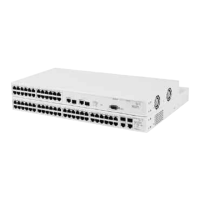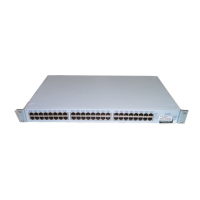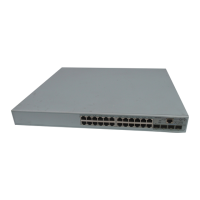48 CHAPTER 6: USING TRAFFIC MANAGEMENT
■ Financial applications — Used by Accounts departments that need
immediate access to large files and spreadsheets.
■ CAD/CAM design applications — Used by design departments that
need priority connections to server farms and other devices for
transferring large files.
How Traffic
Prioritization Works
Traffic prioritization ensures that high priority data is forwarded through
the Switch without being delayed by lower priority data. Traffic
prioritization uses the four traffic queues that are present in the hardware
of the Switch to ensure that high priority traffic is forwarded on a
different queue from lower priority traffic. High priority traffic is given
preference over low priority traffic to ensure that the most critical traffic
gets the highest level of service.
The Switch employs three methods of classifying traffic for prioritization.
Traffic classification is the means of identifying which application
generated the traffic, so that a service level can be applied to it.
The three supported methods for classifying traffic are:
■ 802.1D (classification is done at layer 2 of the OSI model).
■ DiffServ code point (classification is done at layer 3 of the OSI model).
■ IP Port (classification is done at layer 4 of the OSI model).
These methods can be used together. If a packet is prioritized differently
by different methods then it will be tagged with the higher priority.
802.1D traffic
classification
At layer 2, a traffic service class is defined in an 802.1Q frame, which is
able to carry VLAN identification and user priority information. The
information is carried in a header field immediately following the
destination MAC address, and Source MAC address.
802.1D Priority Levels
The traffic prioritization feature supported by the Switch at layer 2 is
compatible with the relevant sections of the IEEE 802.1D/D17 standard
(incorporating IEEE 802.1p). Once a packet has been classified, the level
of service relevant to that type of packet is applied to it.
